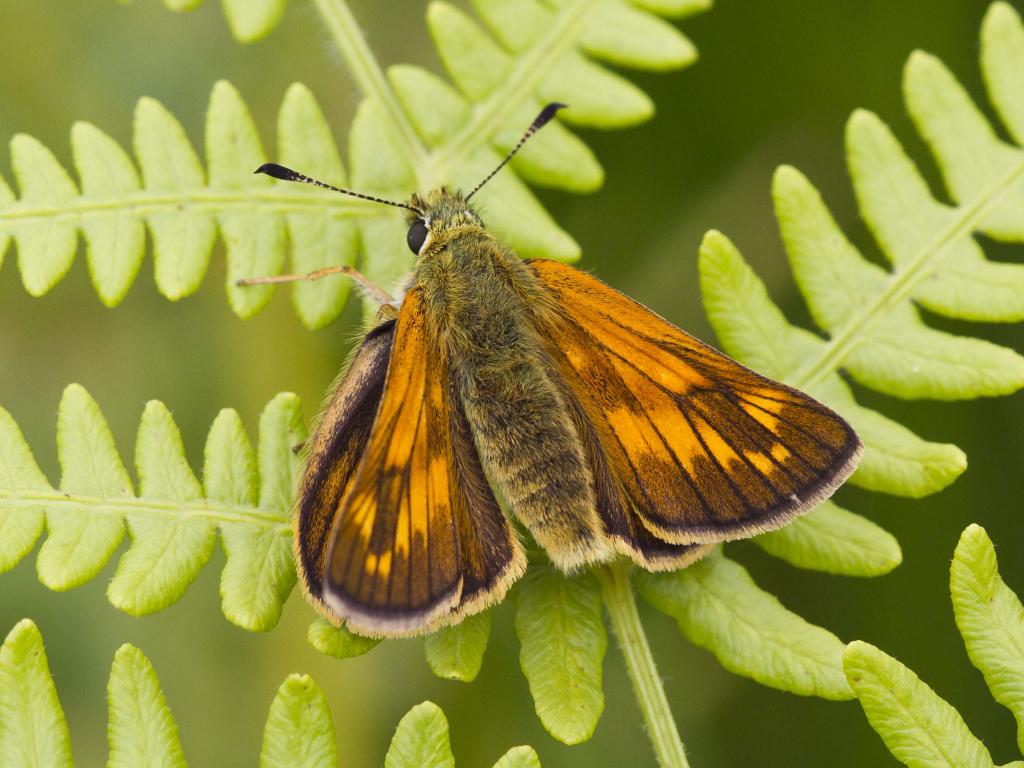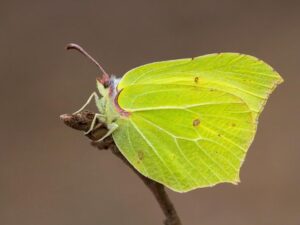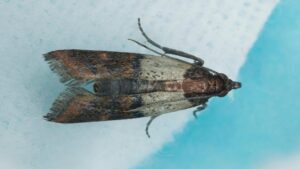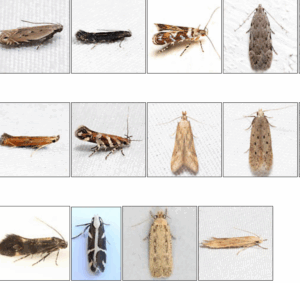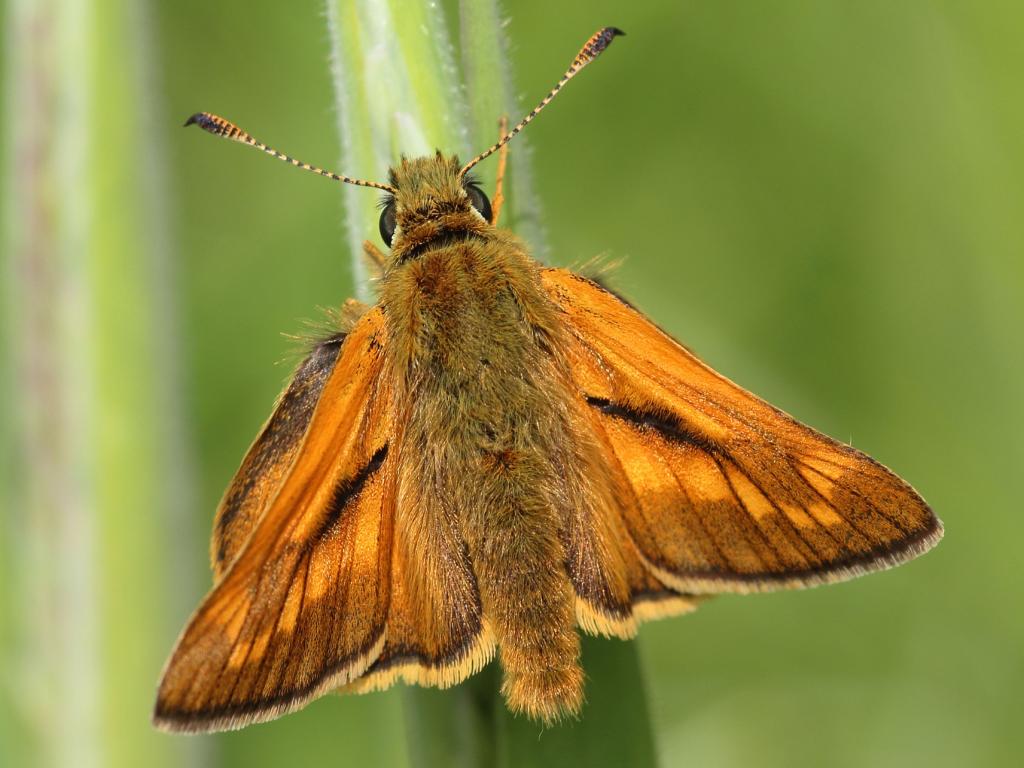
Male Large Skippers are most often found perching in a prominent, sunny position, usually on a large leaf at a boundary between taller and shorter vegetation, awaiting passing females. Females are less conspicuous, though both sexes may be seen feeding on flowers, Bramble being a favourite. Males have a thick black line through the centre of fore-wing. Undersides have faint orange spots unlike the bright silver spots in Silver-spotted Skipper.
The presence of a faint chequered pattern on both sides of the wings distinguishes this species from the similar Small and Essex Skippers, which fly at the same time. The Large Skipper is widespread in southern Britain and its range has extended northwards in north-east England since the 1960s.
This is one of the largest of our “golden” skippers and, like these other skippers, the male has a distinctive sex brand on its forewings containing specialised scent scales. Although this species forms discrete colonies, it is widespread and can be found in England and Wales as far north as Ayrshire in the west and North Northumberland in the east. This species is not found in Ireland or the Isle of Man, and is restricted to Jersey in the Channel Islands.
Size and Family
- Family: Skippers
- Size: Small
- Wing Span Range (male to female): 33-35mm
Conservation Status
- Butterfly Conservation priority: Low
- European Status: Not threatened
Caterpillar Foodplant
Cock’s-foot (Dactylis glomerata) and occasionally Purple Moor-grass (Molinia caerulea) and False Brome (Brachypodium sylvaticum) are used. Females have been observed laying eggs on Tor-grass (B. pinnatum) and Wood Small-reed (Calamagrostis epigejos).
Habitat
This butterfly favours grassy areas, where foodplants grow in sheltered, often damp, situations and remain tall and uncut. It is found in a wide variety of habitats where there are shrubs, tall herbs, and grasses, for example; woodland rides and clearings, pastures, roadside verges, hedgerows, and wet heathland.
This species is found in sheltered areas of grassland, where grasses grow tall. Typical sites include meadows, hedgerows, roadside verges, woodland rides and woodland clearings. It can also be found in urban areas, such as parks and churchyards.
It is also a species of urban habitats, occurring in parks, churchyards, and other places with long grasses.
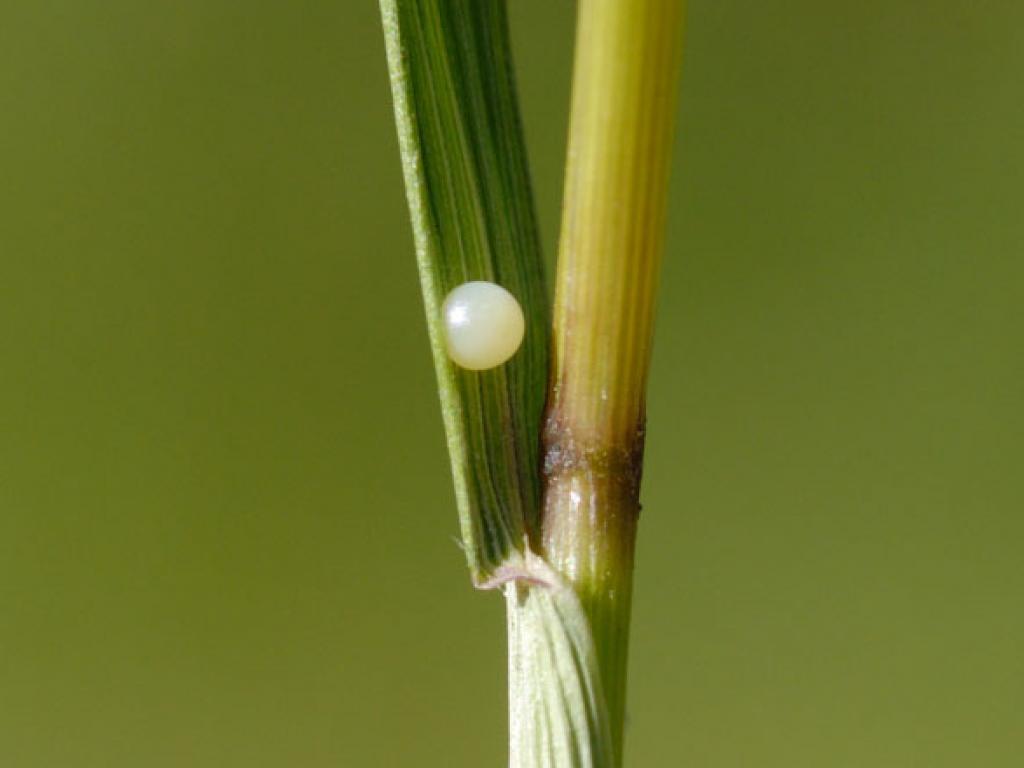
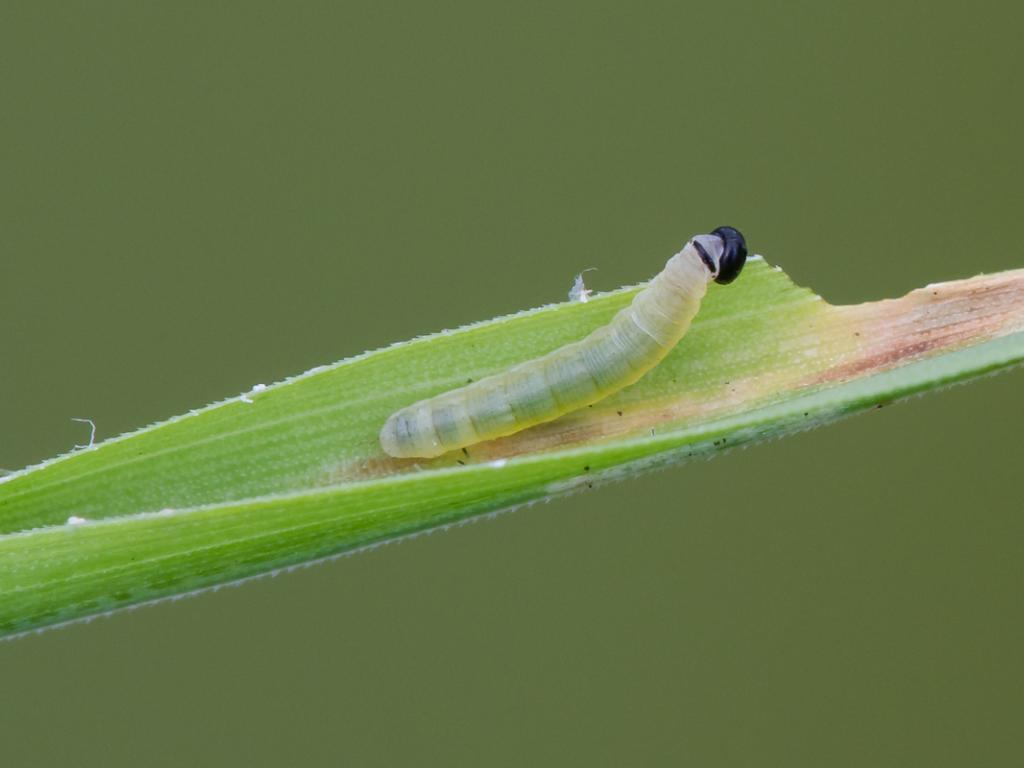
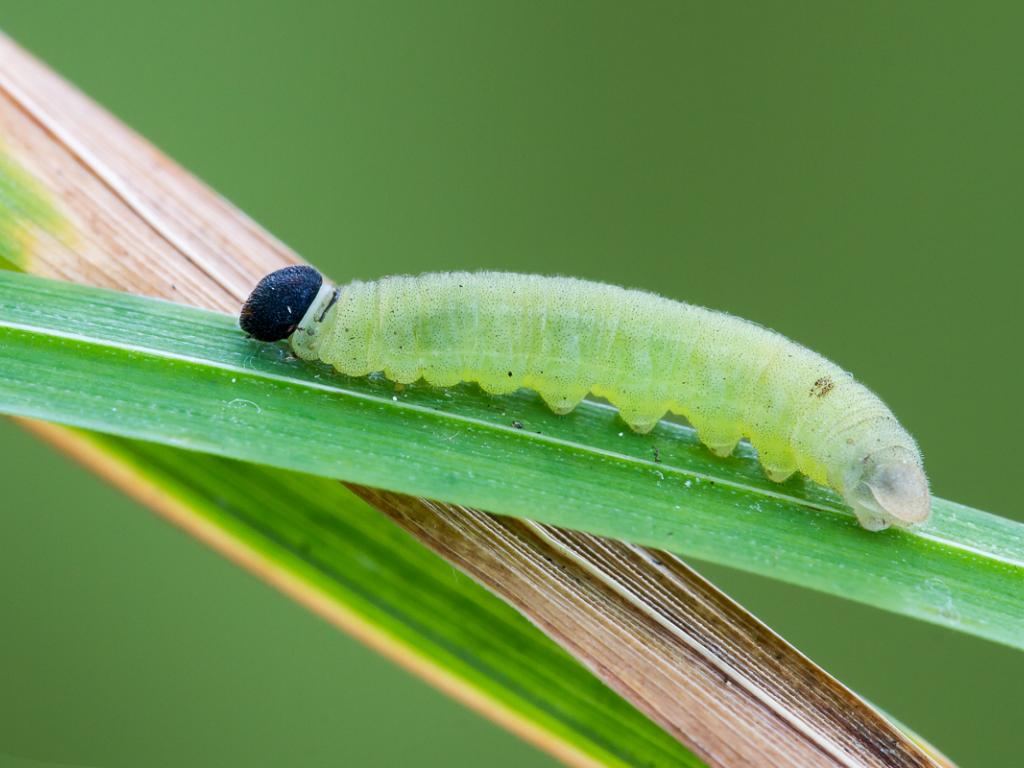
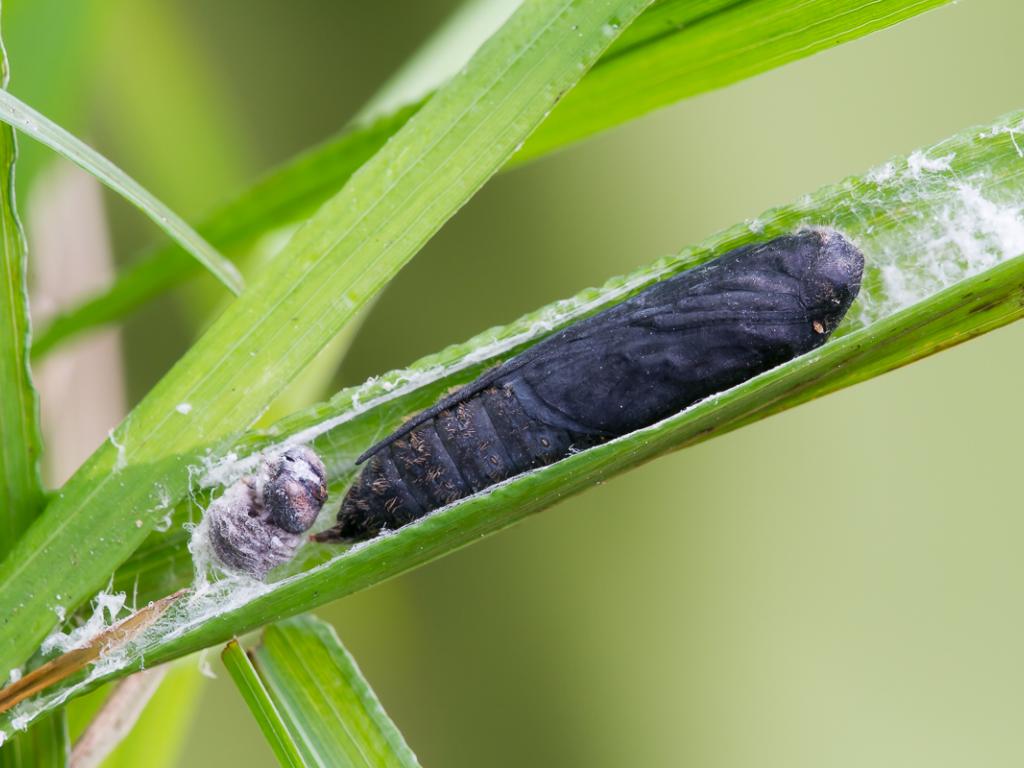
Distribution and habitat
This species occurs from Europe to the East Palearctic realm (northern Asia, China and Japan). In the British Isles it occurs in England, Wales, and south western and southeastern Scotland. It can be found anywhere where wild grasses are allowed to grow tall. Hedgerows, woodland clearings and edges are favourites.
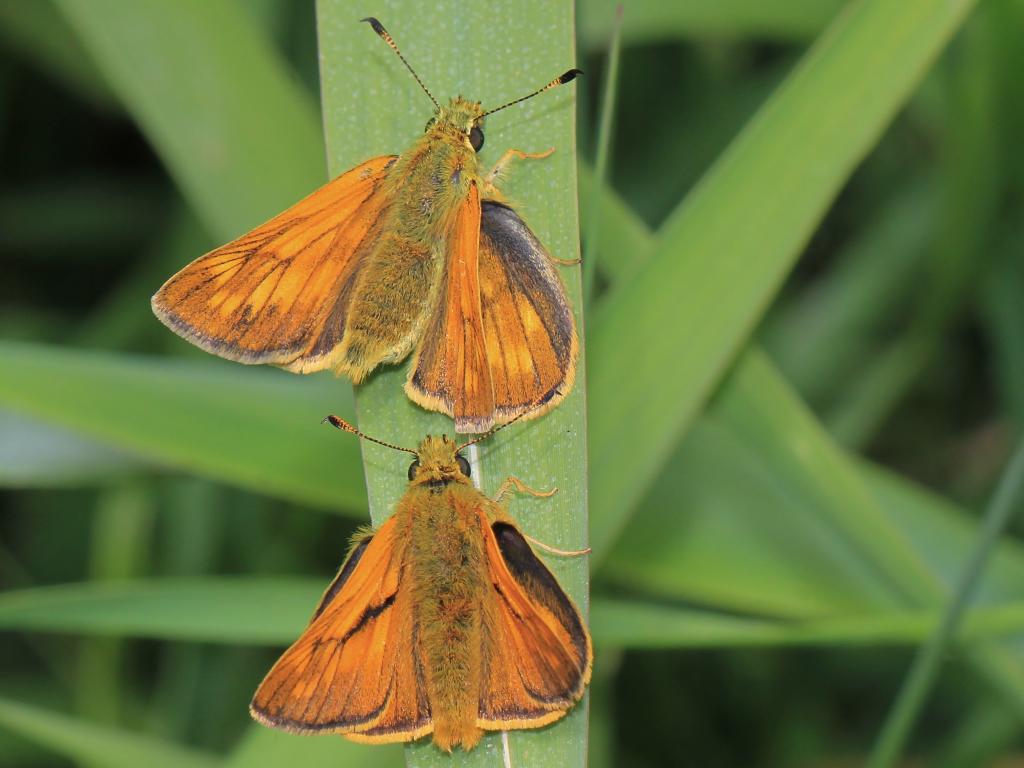
Life cycle and foodplants
In northern Europe these butterflies have a single brood, but in the south they may have up to three broods.Eggs are laid singly on the underside of foodplant leaves and hatch after about two weeks. They are normally laid on cocksfoot (Dactylis glomerata) but they will occasionally use purple moor-grass (Molinia caerulea), false brome (Brachypodium sylvaticum), tor-grass (B. pinnatum) and wood small-reed (Calamagrostis epigejos). Larvae also feed on various Poaceae, Phalaris arundinacea, Alopecurus pratensis, Calamagrostis purpurea, Deschampsia flexuosa, Phragmites communis and Elymus caninus.,[3] but also on Festuca, Triticum, Dactylis glomerata, Molinia, Holcus lanatus, Luzula, etc.
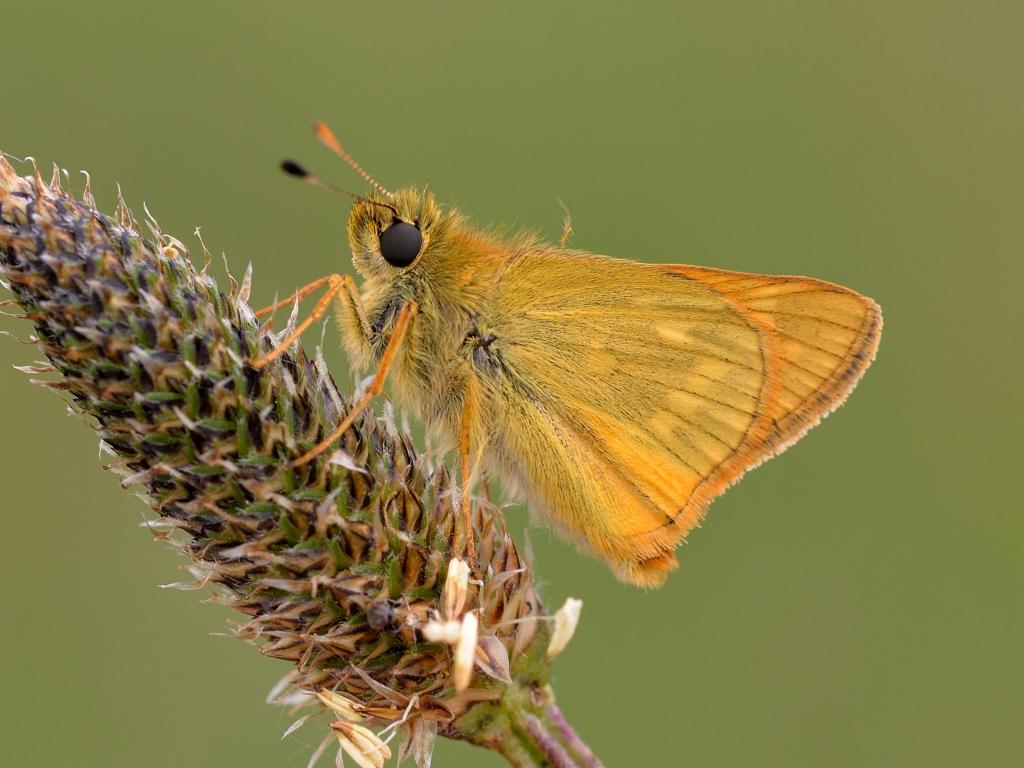
On hatching the larvae construct a shelter in the usual skipper method of curling a leaf up with silk and begins to feed. It hibernates as a half-grown caterpillar and emerges in the spring to continue feeding and growing.Pupation lasts about three weeks during May and June and the adults are present from June to August. It is the first of the grass skippers to emerge in the UK. It is an active butterfly in sunny weather, it is attracted to various flowers but has a distinct liking for bramble flowers.

